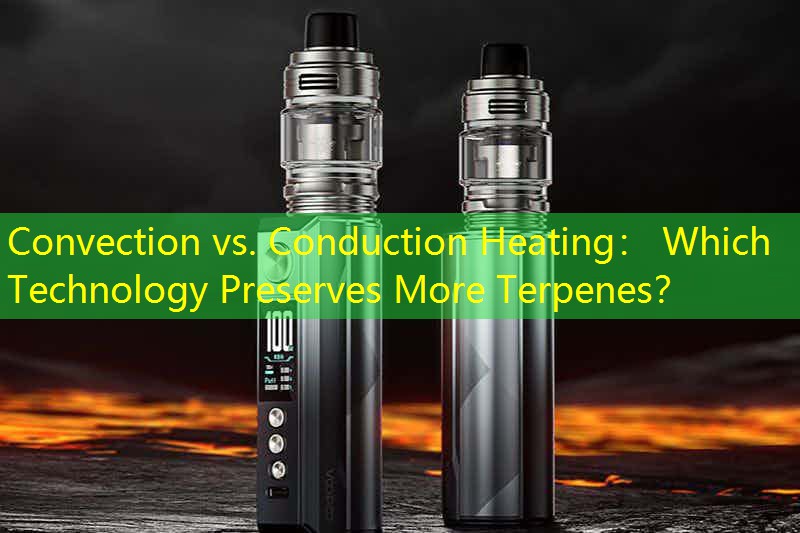مقدمه
The world of herbal vaporization has evolved dramatically with the advent of various heating technologies. در میان اینها, convection and conduction heating have gained significant attention, particularly concerning their ability to preserve the delicate flavor compounds known as terpenes. This article will provide an in-depth look at convection vs. conduction heating technologies, evaluating their characteristics, تجربیات کاربر, competitive comparisons, مزایا و معایب, و جمعیت شناسی را هدف قرار دهید.
Heating Technologies Explained
Convection Heating
Convection heating uses hot air to heat the herbal material indirectly, allowing for even and precise temperature control. This method ensures that the active compounds, including terpenes, are vaporized at optimal temperatures without scorching the material. Users appreciate convection for its clean and flavorful vapor, which can preserve the unique profiles of various strains.
گرمایش هدایت
در مقابل, conduction heating relies on direct contact between the heating element and the herbal material. While this method is often quicker and can provide a robust vapor experience, it risks overheating, potentially degrading terpenes and other volatile compounds. Users generally find conduction devices to be more straightforward and often less expensive, but they may sacrifice flavor integrity for speed.

ویژگی های محصول
Both convection and conduction vaporizers come with a range of features, including temperature control, قابل حمل بودن, و عمر باتری. Convection devices generally feature more advanced technology that facilitates precise temperature adjustments. در مقابل, conduction models may offer simplified interfaces, making them more user-friendly for casual users.
تجربه کاربر
The user experience varies significantly between the two technologies. Convection heating often requires a learning curve to master the perfect draw and temperature settings. هر چند, users report that the payoff is a richer, more nuanced flavor. برعکس, conduction users appreciate the ease of use but might notice diminished flavor profiles due to uneven heating.
مقایسه رقابتی
In the competitive landscape, brands such as Volcano and Firefly lead in convection heating, while PAX and G Pen excel in conduction options. Convection devices typically come at a higher price point, reflecting their superior flavor-preserving abilities. Yet, conduction vaporizers often appeal to budget-conscious consumers seeking simplicity and convenience.
جوانب مثبت و منفی
Convection Heating Pros
– Superior terpene preservation
– Even heating
– Greater flavor depth
Convection Heating Cons
– Higher cost
– More complex to use
Conduction Heating Pros
– Quick heat-up time
– User-friendly
– Generally less expensive
Conduction Heating Cons
– Potential for uneven heating
– Risk of flavor degradation
تجزیه و تحلیل کاربر هدف
Target demographics for convection vaporizers typically include connoisseurs and discerning users who prioritize flavor and quality. These individuals are often willing to invest more in a premium product. در مقابل, conduction devices tend to attract more casual users or those new to herbal vaping, as they offer an accessible entry point without the need for extensive knowledge about temperature control or vaporization techniques.

پایان
خلاصه, the choice between convection and conduction heating largely depends on individual preferences and priorities. Convection provides a superior experience for those seeking to preserve terpenes and enjoy rich flavors, while conduction offers simplicity and speed for casual users. Understanding these differences is crucial for making an informed decision in the dynamic world of herbal vaporization.







